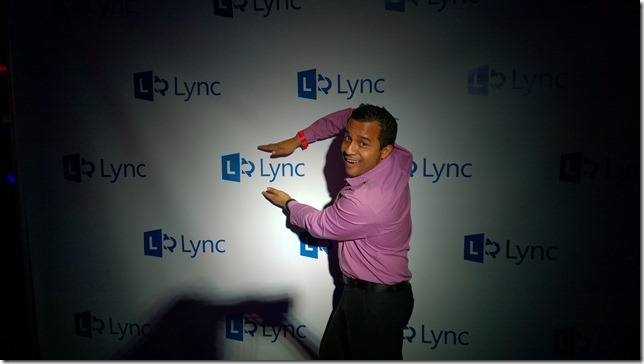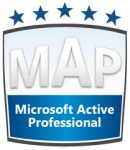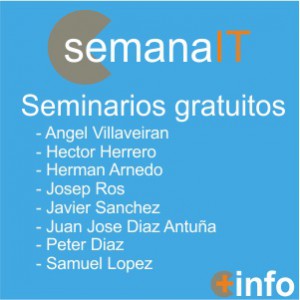Para realizar la migración desde OCS 2007 R2 para Lync Server 2010 tenemos que tomar en cuenta los siguiente:
· Es valida la utilización de Hyper-V como solución de virtualización y/o servidores físicos, ambos escenarios son soportador por Microsoft. Nota es recomendable que los servidores Edge Server de Lync sean físicos pero están soportados bajo un escenario virtual.
· El nivel funcional del dominio soportado por Microsoft Lync Server 2010 es 2003 Nativo como mínimo
· Todos los controladores de dominio deben estar con Service Pack 2 (SP2) de Windows Server y/o Windows Server 2008 R2 SP1
· Disponer de un ambiente de coexistencia para alojar los roles y servicios de Microsoft Lync Server 2010 (servidores virtuales y/o físicos), no se puede instalar Lync Server sobre los servidores OCS 2007 R2
· Pasar en el entorno actual de OCS 2007 R2 el Best Practice Analyzer de Lync
http://www.microsoft.com/download/en/details.aspx?displaylang=en&id=18237
· Realizar un Legacy Backup de la infraestructura actual de OCS 2007 R2
http://technet.microsoft.com/en-us/library/dd572319(office.13).aspx
· Desplegar en los servidores OCS 2007 R2 los updates necesarios para realizar la coexistencia con Microsoft Lync Server 2010, así como los respectivos comandos Powershell para realizar la convergencia de los roles a migrar:
|
Aplicación |
Update |
URL |
|
Microsoft Office Communicator 2007 R2 |
July 2010 Update package |
|
|
Microsoft Office Live Meeting 2007 |
July 2010 Update package |
|
|
Microsoft Office Live Meeting Conferencing Add-In |
July 2010 Update package |
|
|
Office Communications Server 2007 R2 |
September 2010 Update package |
|
|
Microsoft Office Communicator 2007 R2 Phone Edition |
July 2010 Update package |
· Se debe disponer de las medias de Microsoft Lync Server 2010 dependiendo así como las respectivas CAL (Licenciamiento) para los usuarios móviles y de voz empresarial. Microsoft Lync Server 2010 en su versión Enterprise da a la solución a implementar alta disponibilidad, tolerancia a fallas y balanceo de carga este ultimo basados en DNS Round Robin pero es soportable con balanceadores de carga hardware.
· Los servicios de Front End, Back End y Edge Server se configuraran en clúster utilizando como sistema operativo Windows Server 2008 R2 Enterprise, si vamos a contar con un ambiente de alta disponibilidad, no aplica para la versión Standard Edition.
· Contar con los puertos y configuración a nivel de DNS tanto para los clientes internos y externos a fin de garantizar el funcionamiento de todos los roles y servicios e Microsoft Lync Server 2010:
Para mas detalles consultar: http://technet.microsoft.com/en-us/library/gg398833.aspx
|
Server role |
|
Puerto |
Protocolo |
Notas (en inglés) |
|
Front End Servers |
Lync Server Front-End service |
5060 |
TCP |
Optionally used by Standard Edition servers and Front End Servers for static routes to trusted services, such as remote call control servers. |
|
Front End Servers |
Lync Server Front-End service |
5061 |
TCP (TLS) |
Used by Standard Edition servers and Front End pools for all internal SIP communications between servers (MTLS), for SIP communications between Server and Client (TLS) and for SIP communications between Front End Servers and Mediation Servers (MTLS). Also used for communications with Monitoring Server. |
|
Front End Servers |
Lync Server Front-End service |
444 |
HTTPS TCP |
Used for HTTPS communication between the Focus (the Lync Server component that manages conference state) and the individual servers. This port is also used for TCP communication between Front End Servers and Survivable Branch Appliances. |
|
Front End Servers |
Lync Server Front-End service |
135 |
DCOM and remote procedure call (RPC) |
Used for DCOM based operations such as Moving Users, User Replicator Synchronization, and Address Book Synchronization. |
|
Front End Servers |
Lync Server IM Conferencing service |
5062 |
TCP |
Used for incoming SIP requests for instant messaging (IM) conferencing. |
|
Front End Servers |
Lync Server Web Conferencing service |
8057 |
TCP (TLS) |
Used to listen for Persistent Shared Object Model (PSOM) connections from client. |
|
Front End Servers |
Lync Server Web Conferencing Compatibility service |
8058 |
TCP (TLS) |
Used to listen for Persistent Shared Object Model (PSOM) connections from the Live Meeting client and previous versions of Communicator. |
|
Front End Servers |
Lync Server Audio/Video Conferencing service |
5063 |
TCP |
Used for incoming SIP requests for audio/video (A/V) conferencing. |
|
Front End Servers |
Lync Server Audio/Video Conferencing service |
57501-65335 |
TCP/UDP |
Media port range used for video conferencing. |
|
Front End Servers |
Lync Server Web Compatibility service |
80 |
HTTP |
Used for communication from Front End Servers to the web farm FQDNs (the URLs used by IIS web components) when HTTPS is not used. |
|
Front End Servers |
Lync Server Web Compatibility service |
443 |
HTTPS |
Used for communication from Front End Servers to the web farm FQDNs (the URLs used by IIS web components). |
|
Front End Servers |
Lync Server Conferencing Attendant service (dial-in conferencing) |
5064 |
TCP |
Used for incoming SIP requests for dial-in conferencing. |
|
Front End Servers |
Lync Server Conferencing Attendant service (dial-in conferencing) |
5072 |
TCP |
Used for incoming SIP requests for Microsoft Lync 2010 Attendant (dial in conferencing). |
|
Front End Servers that also run a Collocated Mediation Server |
Lync Server Mediation service |
5070 |
TCP |
Used by the Mediation Server for incoming requests from the Front End Server to the Mediation Server. |
|
Front End Servers that also run a Collocated Mediation Server |
Lync Server Mediation service |
5067 |
TCP (TLS) |
Used for incoming SIP requests from the PSTN gateway to the Mediation Server. |
|
Front End Servers that also run a Collocated Mediation Server |
Lync Server Mediation service |
5068 |
TCP |
Used for incoming SIP requests from the PSTN gateway to the Mediation Server. |
|
Front End Servers that also run a Collocated Mediation Server |
Lync Server Mediation service |
5081 |
TCP |
Used for outgoing SIP requests from the Mediation Server to the PSTN gateway. |
|
Front End Servers that also run a Collocated Mediation Server |
Lync Server Mediation service |
5082 |
TCP (TLS) |
Used for outgoing SIP requests from the Mediation Server to the PSTN gateway. |
|
Front End Servers |
Lync Server Application Sharing service |
5065 |
TCP |
Used for incoming SIP listening requests for application sharing. |
|
Front End Servers |
Lync Server Application Sharing service |
49152-65335 |
TCP |
Media port range used for application sharing. |
|
Front End Servers |
Lync Server Conferencing Announcement service |
5073 |
TCP |
Used for incoming SIP requests for the Lync Server Conferencing Announcement service (that is, for dial-in conferencing). |
|
Front End Servers |
Lync Server Call Park service |
5075 |
TCP |
Used for incoming SIP requests for the Call Park application. |
|
Front End Servers |
Lync Server Audio Test service |
5076 |
TCP |
Used for incoming SIP requests for the Audio Test service. |
|
Front End Servers |
Not applicable |
5066 |
TCP |
Used for outbound Enhanced 9-1-1 (E9-1-1) gateway. |
|
Front End Servers |
Lync Server Response Group service |
5071 |
TCP |
Used for incoming SIP requests for the Response Group application. |
|
Front End Servers |
Lync Server Response Group service |
8404 |
TCP (MTLS) |
Used for incoming SIP requests for the Response Group application. |
|
Front End Servers |
Lync Server Bandwidth Policy Service |
5080 |
TCP |
Used for call admission control by the Bandwidth Policy service for A/V Edge TURN traffic. |
|
Front End Servers |
Lync Server Bandwidth Policy Service |
448 |
TCP |
Used for call admission control by the Lync Server Bandwidth Policy Service. |
|
Front End Servers where the Central Management store resides |
Lync Server Master Replicator Agent service |
445 |
TCP |
Used to push configuration data from the Central Management store to servers running Lync Server. |
|
All Servers |
SQL Browser |
1434 |
UDP |
SQL Browser for local replicated copy of Central Management store data in local SQL Server instance |
|
All internal servers |
Various |
49152-57500 |
TCP/UDP |
Media port range used for audio conferencing on all internal servers. Used by all servers that terminate audio: Front End Servers (for Lync Server Conferencing Attendant service, Lync Server Conferencing Announcement service, and Lync Server Audio/Video Conferencing service), and Mediation Server. |
|
Directors |
Lync Server Front-End service |
5060 |
TCP |
Optionally used for static routes to trusted services, such as remote call control servers. |
|
Directors |
Lync Server Front-End service |
444 |
HTTPS TCP |
Inter-server communication between Front End and Director. |
|
Directors |
Lync Server Web Compatibility service |
80 |
TCP |
Used for initial communication from Directors to the web farm FQDNs (the URLs used by IIS web components). In normal operation, will switch to HTTPS traffic, using port 443 and protocol type TCP. |
|
Directors |
Lync Server Web Compatibility service |
443 |
HTTPS |
Used for communication from Directors to the web farm FQDNs (the URLs used by IIS web components). |
|
Directors |
Lync Server Front-End service |
5061 |
TCP |
Used for internal communications between servers and for client connections. |
|
Mediation Servers |
Lync Server Mediation service |
5070 |
TCP |
Used by the Mediation Server for incoming requests from the Front End Server. |
|
Mediation Servers |
Lync Server Mediation service |
5067 |
TCP (TLS) |
Used for incoming SIP requests from the PSTN gateway. |
|
Mediation Servers |
Lync Server Mediation service |
5068 |
TCP |
Used for incoming SIP requests from the PSTN gateway. |
|
Mediation Servers |
Lync Server Mediation service |
5070 |
TCP (MTLS) |
Used for SIP requests from the Front End Servers. |
Para mas información podemos ir al siguiente URL:
http://technet.microsoft.com/en-us/library/gg413057.aspx
Peter Diaz.












